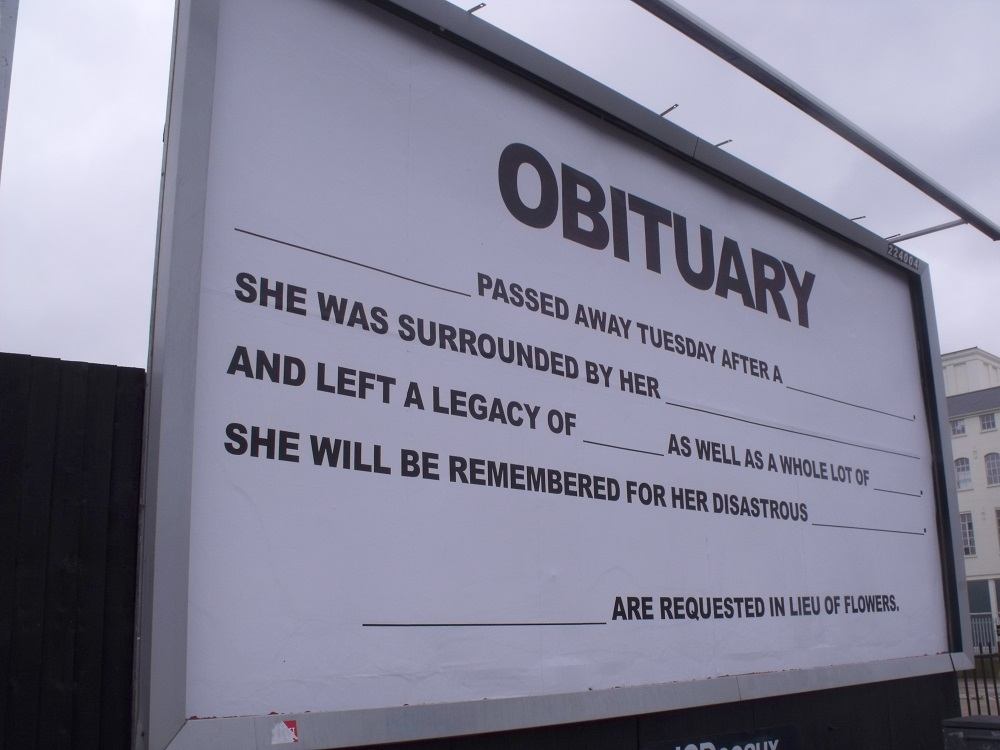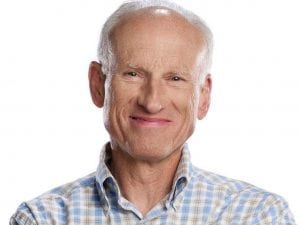
Among my clearest childhood memories is my Dad turning to the obituary page when the afternoon paper hit the porch each day. Some days he would make a comment about a person who had passed, other times he would just scan the page and move on to the sports section. In our small Florida town, it wasn’t unusual to see a familiar name. In most cases, the death was of someone ill or elderly so it was not a big surprise. Sometimes, though, it would be a tragic situation that took a life too soon. Either way, reading about those people gave one a sense of connection, just as the birth and marriage announcements that were listed on the same page did. They were a touchpoint to our own history and mortality.
We still read obituaries for the same reasons we always have—to learn more about others who passed our way, how they lived their lives, and who they left behind. The trouble is, for most people, the traditional obituary doesn’t provide much insight into the real essence of the person being memorialized. Unless the subject is famous or of high standing in the community, the obituary is normally just a laundry list of facts and figures—dates, family members, job history. But things are changing. More and more we see people penning their own life stories or enlisting the help of a professional obituary writer so that the black and white memorial that is published upon their death is more than just a set of dry statistics.

In reality, the self-written obituary is not really all that new. It’s just getting a lot of attention. The trend has been in the media for at least the last ten years. What is new is how quickly some of the more notable stories are going viral.
In March, the self-penned obituary of Emily Phillips, a Florida grandmother who succumbed to cancer, hit the Internet and spread like wildfire. It’s easy to see why. Her story offers a blend of wit, humor, and sentimentality that would likely never have been told if left to conventional obituary publication channels.
It could be argued that what we call a self-written obituary is an evolving art form that is entirely separate from what we normally think of as an obituary. Traditional obituaries, written by newspaper staff, follow a set of guidelines for which the New York Times Obituary Formula is the gold standard. For the everyday person, these cost money to publish. They are priced by the line with each line limited to a certain number of characters. Most estimates range from $300-600 dollars for a typical write-up. Funeral homes will place the story or you can do it yourself. Somewhere along the line, the obituary will end up on an online memorial site such as Legacy.com and it will no doubt cost you money.
But what about these widely distributed self-penned obituaries? These stories may or may not wind up in your local newspaper. More than likely, they are placed on social media sites or blogs by a loved one and then are discovered by the world. To be sure, the most popular of these don’t follow the time-honored “who, what, when, where, why”. A good example is the self-penned obituary of the actor James Rebhorn which was published after his death in March 2014. Rebhorn’s version is a touching love letter to his family in which his success in his profession is virtually a footnote. This is in stark contrast to the New York Times version which justifiably covers the ground regarding the quality and breadth of Mr. Rebhorn’s acting career. His family is mentioned only in the context of being his survivors.

It’s hard to say just how quickly the trend toward writing your own obituary is growing. Certainly, there is plenty of anecdotal evidence pointing to the growth. Katharine Lowrie, a professional obituary writer recently commented to us on her own experience. “I do get more calls for that than I did in the beginning. I know more people are doing it. I just can’t give you any statistics.” Add to that the growing number of online tutorials on how to get started, classes being offered, and do-it-yourself kits on the market and you have a pretty good argument that this is more of a movement than a trend.
Many who have been following growth in the phenomena attribute the popularity to Baby Boomer’s desire to control the narrative–hence the rise of the term “selfie obituary.” But tossing it off as just a bit of self-serving indulgence doesn’t seem fair. While this may be a part of it, we also have to consider the availability of technology, increased emphasis on funeral and end-of-life planning, and other factors such as the rise in hospice care with its emphasis on building one’s legacy (Philly.com). No doubt, it’s a combination of all these factors and more.
Whether or not you want to write your own obituary is a very personal decision. And to be sure, it’s not nearly as easy as it sounds. If it were simple then there would be no need for the cottage industry that is springing up to support it. One thing we can probably all agree on though is that thanks to the rise of the “selfie obituary” we are able to read about some very interesting people and share some of their most intimate thoughts. Many of these stories are filled with humor and nearly all are full of love. It doesn’t really matter what has driven the person to write it, the self-penned obituary leaves behind a record of a life that that was extraordinary. In the words of Katharine Lowrie, “Every life has a great story. It doesn’t matter who you are.”
>>Related: My Name is Katharine Lowrie and I Talk to Dead People
The self-penned obituary:
- Emily Fisher Phillips: 3/31/2015 – Mother, teacher.
- Aaron Joseph Purmort: 11/29/2014 – Spiderman.
- Gloria Louise (Aertker) Fralish: 9/29/2014 – A life well lived.
- Margaret (Marge) Aitken: 8/18/2014 – Writer.
- Kevin J. McGroarty: 7/29/14 – A very clever ad man.
- James Rebhorn: 3/24/ 2014 – Actor.
- Walter Bruhl: 3/11/ 2014 – A very cool grandpa.
- Virginia Hicks: 10/2/2013 – One of a kind.
- Jane Catherine Lotter: 7/28/ 2013 – Writer.
- Val Patterson: 7/18/2012 – Man making a big confession.
- Elizabeth Sleasman: 4/16/2013 – A cautionary tale.
- Peter Worthington: 3/14/2013 – Toronto Sun Founding Editor.
- Malcolm Wells: 2009 – Renowned Architect.

